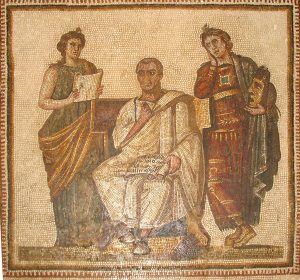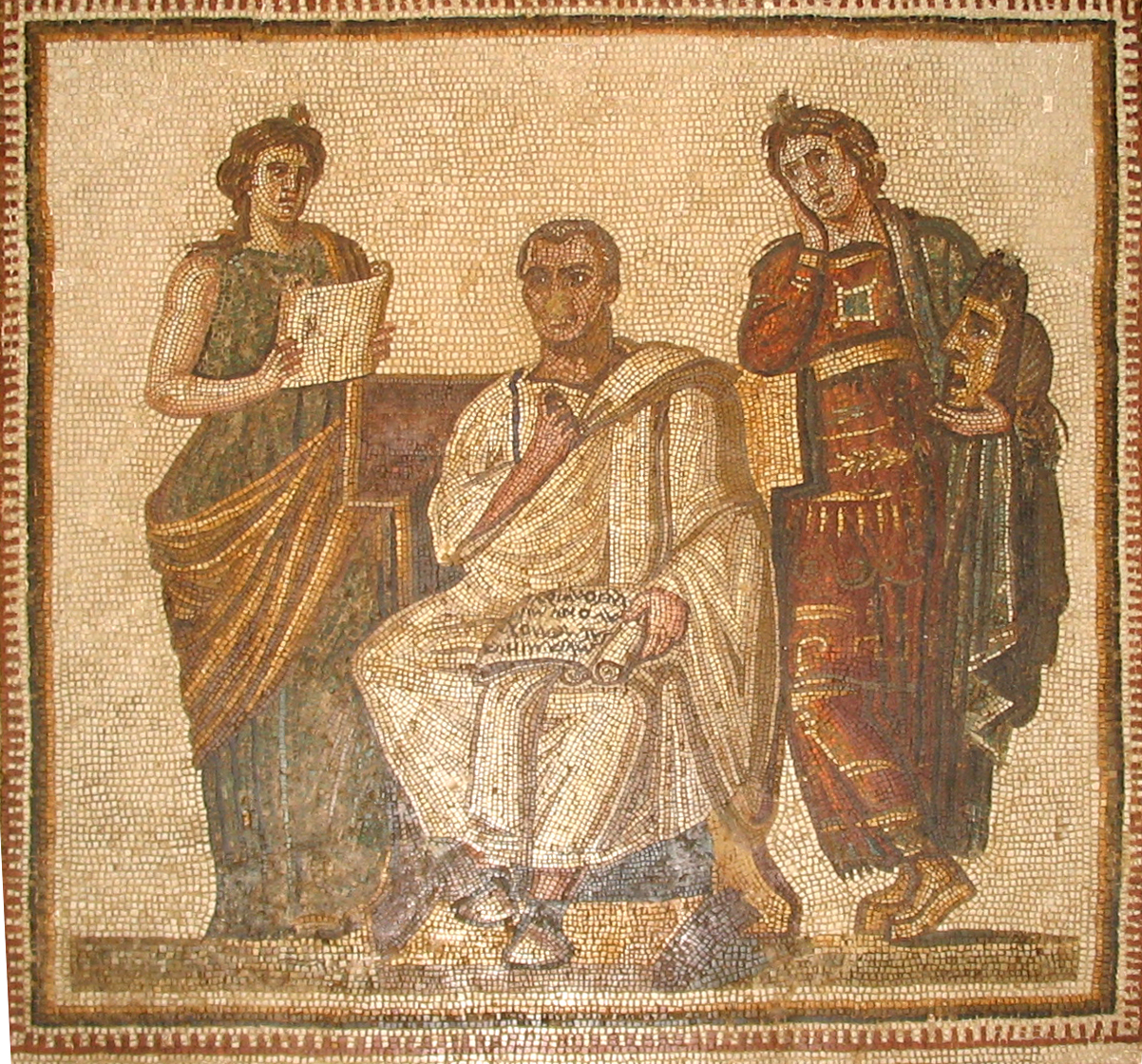What is a poem? That is the question Gabriel Macedo (University of Liège in Belgium) tackles at the outset of this book. While the ancient Romans left us few theoretical definitions, the one that seems most appropriate was written by the scholar Varro (116-27 BCE). “Poema,” he wrote, “is a rhythmical diction, that is a number of words arranged metrically.” He goes on to say that a “continuous theme out of rhythms, like Homer’s Iliad” can be described as poesis. Picking up on the rhythmic aspect, the word most commonly used in Latin to denote a poem is carmen, which translates as ‘song’.
How such carmens were collected into books that people had in the private libraries, or libraries for the public, is the subject of Macedo’s study. He does not offer an opinion as to how many poetry books existed, but the sad fact is that only fragments of 35 such books have survived. They date from the 1st to the 6th centuries; of these 26 “contain works written in one single meter, the dactylic hexameter.” As in Greek literature, the hexameter is the one used by epic poetry, and also “didactic, philosophical and bucolic poetry, satire, elegy, and drama.”
Even though he was denied access to some of the books (the Vatican, for example, refused access to some), Macedo was able to examine nearly all the extant fragments of the poetry books. In this study he lays out in meticulous detail all of the characteristics of these texts, such as size, type of script used, lines per page, metrical layout, punctuation, and many other technical details. In the extensive Appendices, he even “reconstructs” the books, indicated which passages of which poems appeared on which pages. A thorough academic study, the likes of which has never been attempted before.
I will give just one example of what Macedo writes on a certain papyrus fragment that contains 25 verses from Virgil’s Aeneid. “The text seems to have been laid out in a long and narrow column whose measurements can be estimated at 30.5 x 12 cm. Surviving portions of the inner and outer margins suggest that the codex leaf was at least 18-19 cm (7.4 inches) wide.” This particular fragment stands out as “it has the highest number of lines per page of all Latin codices: 38.” Based on that, he estimates the book was 265 pages long to cover the entire Aeneid. It now resides at University Library, Cambridge, and dates to the 5th century, making it about 1600 years old.
At the other end of the spectrum was a “monumental book” of an estimated 600 pages, containing much of Virgil’s work. Its surviving leaves of parchment are 42 cm tall and 32.5 cm wide (16.5 x 12.8 inches). “Practicability and ease of use were not criteria,” for this book. “Rather than being read, it was most probably displayed as an objet d’art.” In the detailed notes in the Appendix, one learns that books such as this often survived for centuries, only to be damaged in more recent times. This one was partially destroyed “during the pillage of the abbey of Sant-Denis-en-France by the Hugenots in 1567.” The worst destroyer was Cardinal Angelo Mai (1782-1854), who enjoyed treating parchments with a chemical solution that allowed him to read the underlying texts. The result “ultimately corroded the skin and irremediably damaged the book.”
While some of these ancient books do contain images, Macedo’s book sadly has only five. The discussion of different types of script, for example, forces readers to imagine what the letters looked like; while most readers of this book may already know, the appeal of the book would have been broadened by more imagery.
The annotations written on these ancient parchments are also very revealing. One of them contains the works of Terence, and it contains a profusion of notes written by various people, giving us a “principal source for ancient scholarship on Terence.” Some of these annotations were written not long after the text was written, as we can see the annotations in the right-hand margin continuing into the fold of the book, meaning they were written before the pages were folded and bound.
He delves into the vexed question of dating, showing that most scholars who have tried to establish more accurate dates for these books are likely wrong. The best one can do in most cases is to give a certain century during which it was likely written. As for location, “it is to library shelves in Europe rather than the desert sands in the East that we owe the survival of sixteen of the 35 late antique manuscripts of Latin poetry studied here.”
After surveying each book individually, Macedo does a great service by then looking at each author (such as Virgil, Juvenal, Lucan) and describing all the books that contain works by each of them. This also gives us the opportunity of understanding more about the lives of each author, and how their works were preserved.
There is one typo in the book. On pg. 79, it should read “an anecdotical,” not “an ecdotical”.
While a largely technical book, there is much fascinating detail here that will appeal to anyone interested in how our ancient literary heritage was written and passed down through the centuries. Overall, a tremendous and much-needed example of meticulous scholarship that advances our understanding of book-making during the Roman Empire.
Photo: Image from a 3rd century mosaic, showing a book in the form of a scroll. Photo courtesy of Wikimedia Commons.
Ancient Latin Poetry Books: Materiality and Context is $80 by Univ. of Michigan Press.

